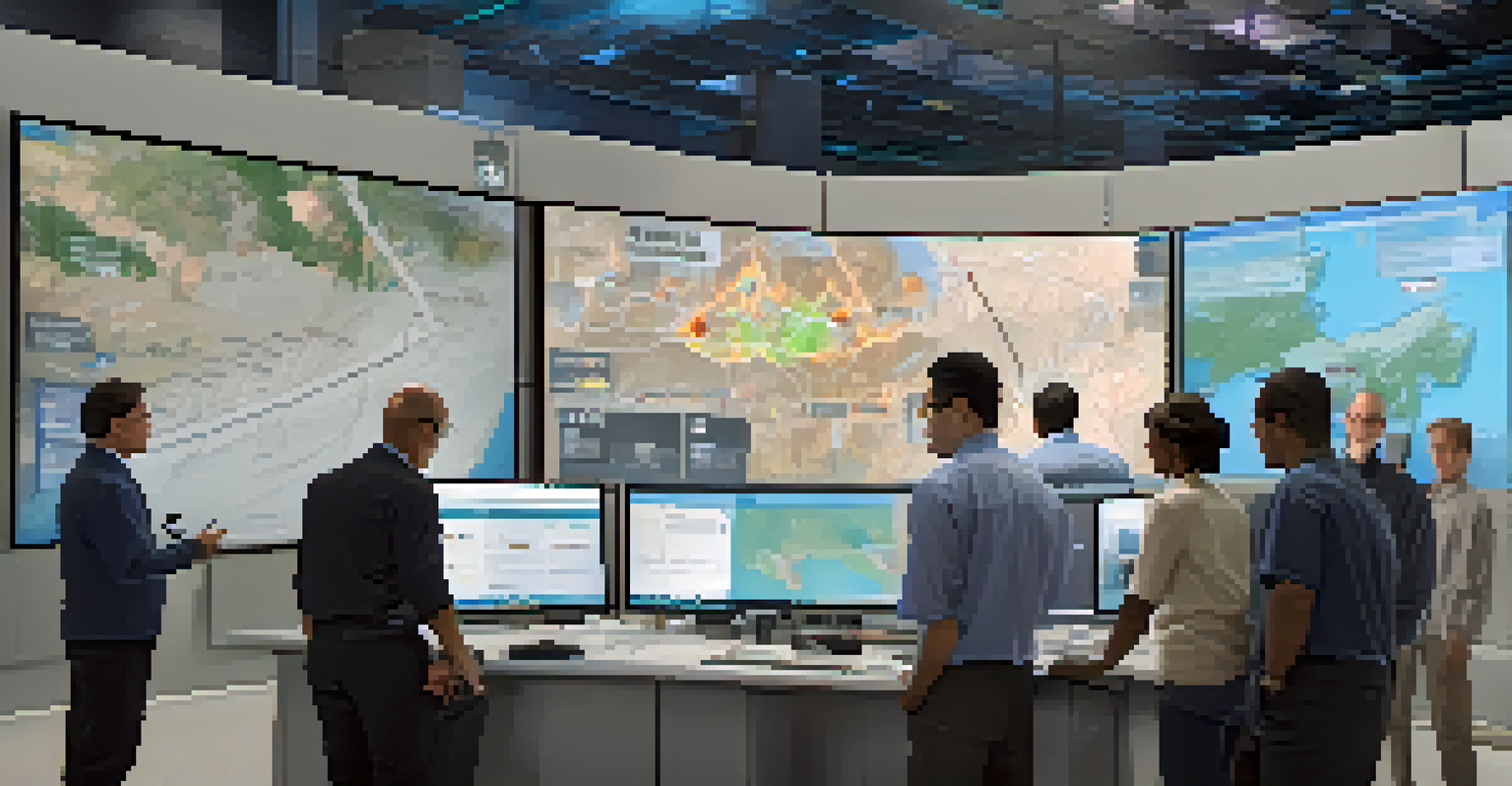Lessons Learned: California Earthquake Recovery Efforts

Understanding the Importance of Preparedness
California has long been known for its earthquake risks, making preparedness crucial. Communities that had established emergency plans and practiced drills were significantly better equipped when disaster struck. Having a solid plan in place can mean the difference between chaos and coordinated response in the face of adversity.
By failing to prepare, you are preparing to fail.
Preparedness isn't just about having supplies; it's also about fostering a culture of readiness. Engaging residents in discussions about potential risks helps them feel empowered and informed. When individuals understand their role in an emergency, they can act decisively and responsibly.
Moreover, communication is a key element of preparedness. When everyone knows who to contact and what to do during an earthquake, the recovery process can begin much faster. This collective awareness builds resilience within communities, helping them bounce back more effectively.
The Role of Technology in Recovery
Technology has played an essential role in California's earthquake recovery efforts. From early warning systems that alert residents seconds before shaking begins to apps that provide real-time information, tech innovations have transformed how communities respond to disasters. These tools not only save lives but also facilitate quicker recovery.

Furthermore, social media has proven invaluable during emergencies. Platforms enable rapid dissemination of information, allowing officials to communicate effectively with the public. For instance, residents can receive updates on road conditions, shelter locations, and safety tips, all in real time.
Preparedness Saves Lives
Communities that engage in emergency planning and drills enhance their ability to respond effectively during disasters.
However, it's important to remember that technology must be accessible to everyone. Digital divides can leave certain populations vulnerable, so ensuring that all community members have access to vital information is crucial. Training and resources should be provided to those who may not be tech-savvy, ensuring inclusivity in recovery efforts.
Building Stronger Infrastructure
One of the most significant lessons learned from past earthquakes is the necessity for robust infrastructure. Buildings and bridges designed to withstand seismic activity can greatly reduce damage and save lives. Investing in retrofitting existing structures is a proactive approach that can pay off during an earthquake.
The best way to predict your future is to create it.
Moreover, integrating modern engineering techniques into new construction is essential for future resilience. As technology advances, so do the methods used to design earthquake-resistant buildings. Communities that prioritize these innovations are setting themselves up for success in disaster scenarios.
Collaboration among government agencies, engineers, and local businesses is vital in this process. By working together, stakeholders can create comprehensive plans that address vulnerabilities and enhance community safety. This collective effort fosters a sense of shared responsibility for the welfare of all residents.
Community Engagement and Support Systems
The strength of community bonds is often tested during disaster recovery. Engaging residents in recovery efforts not only fosters resilience but also builds a sense of belonging. When individuals feel connected to their neighbors, they are more likely to assist each other during challenging times.
Establishing support systems, such as local volunteer groups and disaster response teams, can significantly enhance recovery efforts. These groups provide immediate assistance and also create a network of resources for those in need. Community-led initiatives often respond faster and more effectively than external agencies.
Technology Aids Recovery
Innovative tech tools, from early warning systems to social media, play a vital role in improving disaster response and recovery efforts.
Furthermore, outreach programs that educate residents about recovery resources can empower individuals. By knowing where to seek help, residents can navigate the recovery landscape more easily. This approach builds confidence in the community's ability to recover together.
Mental Health Considerations Post-Disaster
After an earthquake, mental health often takes a backseat to physical recovery efforts. However, addressing the psychological impact of such disasters is just as crucial. Trauma can linger long after the physical scars have healed, affecting individuals and communities alike.
Providing mental health resources and support services is essential in the recovery process. Counseling, support groups, and community workshops can help individuals process their experiences and rebuild their emotional resilience. Communities that prioritize mental health are better equipped to support their residents in the long term.
Additionally, promoting open conversations about mental health can reduce stigma and encourage individuals to seek help. By fostering an environment where emotional well-being is valued, communities can create a stronger foundation for recovery. It's all about healing together, both physically and mentally.
Lessons from Past Disasters
Reflecting on previous earthquake recovery efforts provides valuable insights for future preparedness. Each disaster leaves behind lessons about what worked and what didn’t, allowing communities to adapt and improve their response strategies. Analyzing past recovery efforts can illuminate best practices and highlight areas for growth.
For example, the 1994 Northridge earthquake taught Californians the importance of building codes and inspections. In the aftermath, stricter regulations were implemented, leading to safer construction practices. These changes have been instrumental in mitigating damage during subsequent earthquakes.
Community Bonds Strengthen Resilience
Building strong community connections and support systems is essential for effective recovery and emotional well-being after disasters.
Moreover, communities that engage in regular drills and simulations can refine their response strategies over time. By learning from past experiences, they can better anticipate challenges and develop effective solutions. This continuous improvement cycle is essential for building resilience against future disasters.
The Importance of Funding and Resources
Recovery efforts require significant funding and resources, which can often be a challenge. Governments, non-profits, and private sectors must collaborate to secure the necessary financial support for effective recovery. Without adequate funding, even the best plans can fall short of their potential.
Additionally, prioritizing resource allocation is crucial in recovery efforts. Communities must assess their needs and ensure that resources are distributed where they are most needed. This targeted approach increases the efficiency of recovery initiatives, ultimately benefiting more residents.

Advocating for funding at local and state levels can also drive long-term recovery strategies. By raising awareness about the importance of investing in disaster preparedness and recovery, communities can garner broader support. When everyone contributes to the recovery conversation, the path forward becomes clearer and more manageable.
Looking Ahead: Future Preparedness Strategies
As California continues to experience earthquakes, developing forward-thinking preparedness strategies is paramount. This involves not only enhancing infrastructure and technology but also fostering a culture of resilience among residents. Preparing for the future requires a multifaceted approach that encompasses various aspects of community life.
Engaging younger generations in discussions about disaster preparedness can create a lasting impact. Educational programs that teach children about earthquakes and safety measures can instill a sense of responsibility and readiness from an early age. These future leaders will carry the torch of preparedness into the next generation.
Ultimately, the key to effective recovery lies in collaboration and continuous improvement. By learning from past experiences and embracing innovation, communities can build a robust framework for future earthquake preparedness. The journey doesn't end after recovery; it's an ongoing process of learning and evolving together.